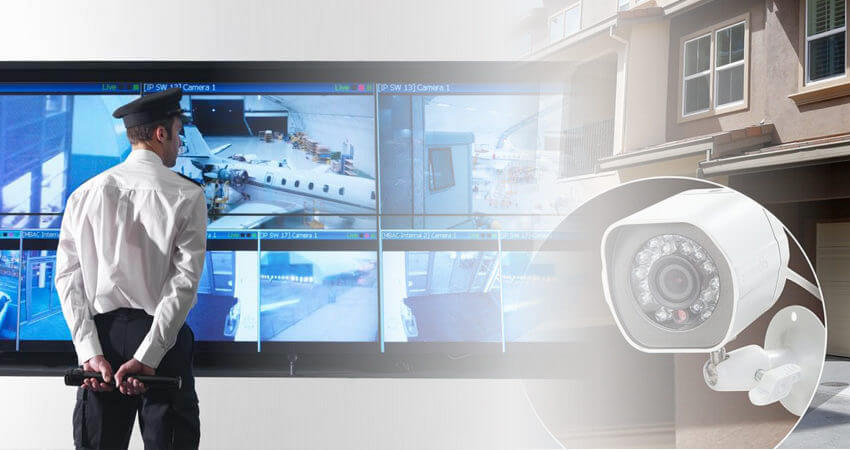[vc_row][vc_column][vc_column_text]
Why we need to install CCTV Systems
Most of us believe we are much secured in this world. When things are going well, there feel the sense of well-being and high security. Are we really secured? The growing number of cases of theft, crime and other illegal activities really makes the things gruesome. As illegitimate things are happening around, we are often nervous about what’s coming down the road. It is true that security is a major concern - and in this world of uncertainty - it is important to take active security measures to minimize the threats. The possible threats such as the theft and other attacks can be effectively guarded through the use of CCTV Systems.
Maintain protection of your business with advanced CCTV systems.
In the wake of rising worries, all the businesses and homes are required to have a thoughtful consideration of the integrated security solutions. Whereas the security guards do the act, the job of surveillance can’t be as precise as the CCTV technology does. Here comes the importance of CCTV security comes into play. Change in the technology and the demand for high clarity images made the customers to invest in high end surveillance systems that works well in the day and night conditions. CCTV cameras have a prominent position in the CCTV system as it brings an exact overview of the prime areas within. As it has been implemented to thwart of the potential threats, these systems have a central role in enhancing the employee productivity – as well it maintains the conduct of the business in a well way. The presence of the security cameras in the office increase the employee’s work ethics and the efficiency. Hence in all ways, it is imperative for the business in this age to take the security in a serious note. Homes are no exception – homes also need a proper security surveillance with CCTV.
 Secure your homes with the CCTV security
Secure your homes with the CCTV security
The figures regarding the burglaries and home crimes are increasing, so it’s crucial to secure your asset at the earliest. CCTV security is an excellent measure you can rely on, if you are so serious about the home security. It is true that, homes with the CCTV cameras installed are less likely to be robed and in fact, you can keep a constant monitoring on the activities through smart phones, tablets and computers from any part of the world. Due to which it is really worth investing in CCTV for your home security, as you have decided to provide extra layer of protection to your dear ones.
Once you have been decided to implement the security systems, the major factor to be taken into consideration is the position of the cameras. You should have a certain idea of what activities and premises are to be covered. Deciding to get the assistance from an experienced CCTV provider has the job half done. They help you to come with the accurate solutions that fit as per your needs.
Here comes the importance of why we need to implement CCTV
- Prevent Crime; Security cameras are good for monitoring criminal activities and for collecting evidence them. Moreover the presence of CCTV cameras make the criminal think twice before they do something cruel.
- Avert Employee Theft: Installing the cameras at key office locations prevents the employees from doing any theft kind of activities. This can ensure the data protection as well in some scenarios.
- Useful piece of evidence: The details captured by the security cameras can be effectively used a piece of evidence in the wake of any suspicious activities. Through this way you can bring the real culprit before the world.
- Help law enforcement solve crime: With the help of the footages, the authorities can unfold the truth of the crime. If the picture of the culprit has been captured clearly, then it becomes easy for the authorities to bring the real culprit.
- Extends the security on elders and the kids: The presence of CCTV camera at homes is a blessing to us. Through the security cameras you can monitor the movements of the children and the elderly members in the family.
- Keep an eye on your important assets: Apart from providing security the security cameras are a great tool that can keep an eye on the important assets throughout. You can monitor the activities at the comfort of your computer or smart phone.
- The presence of camera inside the office is really a boost to the employee behavior. It’s really like a boss who has his head over the employees. The result is good behavior.
- There’s no other tool better than the CCTV camera is available to watch the highly sensitized areas. With the great precision coverage and the accurate angle, the most advanced cameras have the capability to capture the images even in worst lighting and weather conditions.
The most apparent conclusion to be drawn from these points in this blog is that CCTV installation is an effective tool if the aim is to increase the overall safety of business and homes.
[/vc_column_text][/vc_column][/vc_row]
 The Cost of In-House IT Support Services
The Cost of In-House IT Support Services